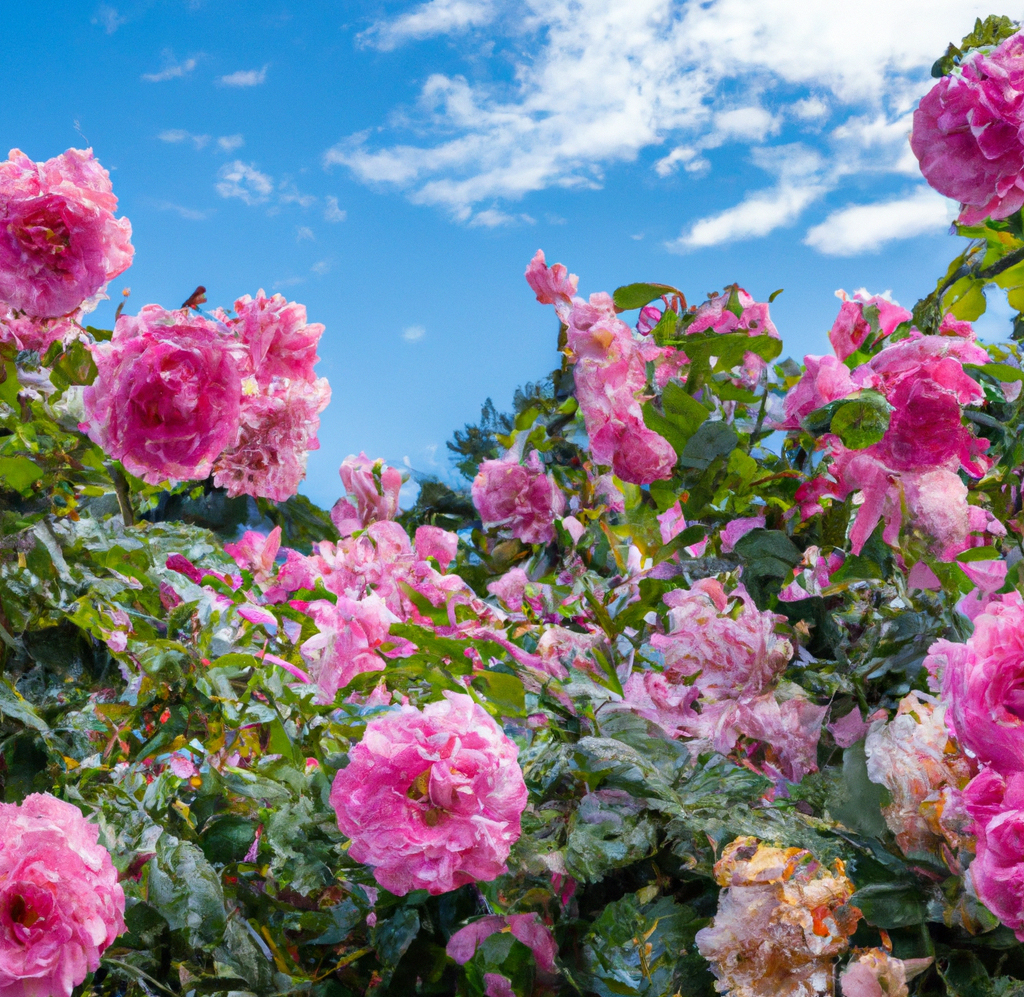Roses are beautiful and versatile, making them an excellent addition to any garden. Growing roses can be daunting for beginners, but by following a step-by-step process, you can enjoy their delightful blooms and fragrance. This guide will discuss choosing a suitable variety, preparing the soil and plant, and caring for your roses to ensure a healthy, vibrant garden.
Selecting the Ideal Rose Variety
To start, choose a suitable variety of roses to suit your needs. Roses come in various colors, sizes, and types, including hybrid teas, floribundas, grandifloras, climbers, and shrub roses. Hybrid teas have large, single blooms and long stems, making them perfect for cut flowers. Floribundas produce clusters of smaller buds, while grandifloras have larger blooms on tall stems. Climbing roses are ideal for trellises or walls, and shrub roses are versatile and suitable for borders, hedges, or as standalone plants.
Preparing the Soil
Roses thrive in well-drained, nutrient-rich soil. Start by removing weeds or debris from the planting area and loosening the soil to a depth of 12-18 inches. Incorporate a generous amount of organic matter, such as compost or aged manure, to improve soil structure and provide necessary nutrients.
To create an ideal environment for your roses, you must prepare the soil correctly. Roses thrive in well-drained, nutrient-rich soil, which allows their roots to grow deep and robust. Here’s a detailed guide to help you prepare the ground for your roses:
- Clear the planting area: Before planting, remove any weeds, grass, or debris from the site where you plan to grow your roses. Weeds compete with your roses for nutrients, water, and sunlight, so keeping the area clear is essential. If necessary, use a herbicide to eliminate persistent weeds, but ensure it’s safe for use around roses and follow the manufacturer’s instructions.
- Loosen the soil: To promote healthy root growth, loosen the dirt to a depth of 12-18 inches. This depth allows the roots to penetrate the ground quickly, access nutrients, and establish a stable foundation for the plant. Use a garden fork or tiller to break up compacted soil or hard clumps.
- Test the soil pH: Roses prefer slightly acidic to neutral soil with a pH between 6.0 and 6.5. Conduct a soil test using a pH testing kit, available at most garden centers. If your soil is too acidic, add lime to raise the pH; if it’s too alkaline, you can add sulfur to lower it. Follow the product instructions for the proper application rates.
- Add organic matter: Incorporate a generous amount of organic matter, such as compost, aged manure, or well-rotted leaf mold, into the loosened soil. Organic matter improves soil structure, increases water retention, and provides vital nutrients for your roses. Add 3-4 inches of organic matter to the planting area and mix it thoroughly with the existing soil.
- Evaluate drainage: Ensure your soil has proper drainage, as roses don’t tolerate standing water or waterlogged soil. To test drainage, dig a hole about 12 inches deep and fill it with water. If the water drains within an hour, your soil has good drainage. If it takes longer, consider amending the soil with coarse sand or planting your roses in raised beds to improve drainage.
- Let the soil rest: After preparing the soil, allow it to settle for a week or two before planting your roses. This resting period gives the amendments time to break down and integrate with the existing soil, ensuring the best possible growing conditions for your roses.
By preparing the soil correctly, you’ll be able to grow healthier and more robust roses.
Planting Roses
After choosing the suitable variety and preparing the soil, follow these steps to plant your roses:
- Dig a hole twice as wide and deep as the root ball of your rose plant.
- Gently loosen the roots before placing the plant in the spot.
- Fill the hole with soil, ensuring not to cover the graft union (where the rootstock and scion meet).
- Water the plant thoroughly to settle the soil around the roots.
Caring for Roses
Proper care is crucial for the health and vitality of your roses. Here are essential rose care tips:
- Watering: Regularly water your roses, especially during the hot summer months. Water deeply at least once a week or more during drought periods.
- Fertilizing: Use a balanced fertilizer (e.g., 10-10-10 or 12-12-12 formula) to promote healthy growth and blooms. Follow the manufacturer’s instructions for application.
- Pruning: Prune your roses in late winter or early spring before new growth starts to improve the plant’s overall health.
- Pest and Disease Control: Monitor your roses for pests and diseases such as aphids, blackspots, and powdery mildew. Address any issues promptly.
- Winter Care: Protect your roses from harsh winter weather in cold climates. Cover the plant’s base with mulch to insulate the roots, and consider wrapping the plant in burlap for added protection.
Conclusion
Growing roses can be a rewarding experience for gardeners of all skill levels. You can enjoy stunning blooms and a healthy garden by selecting a suitable variety, preparing the soil, and providing proper care. Regularly water, fertilize, and prune your roses to maintain their beauty. Stay vigilant for signs of pests or diseases and take immediate action to prevent significant problems. With diligent care, your roses will flourish, bringing joy and beauty to your garden for years. Happy planting!


